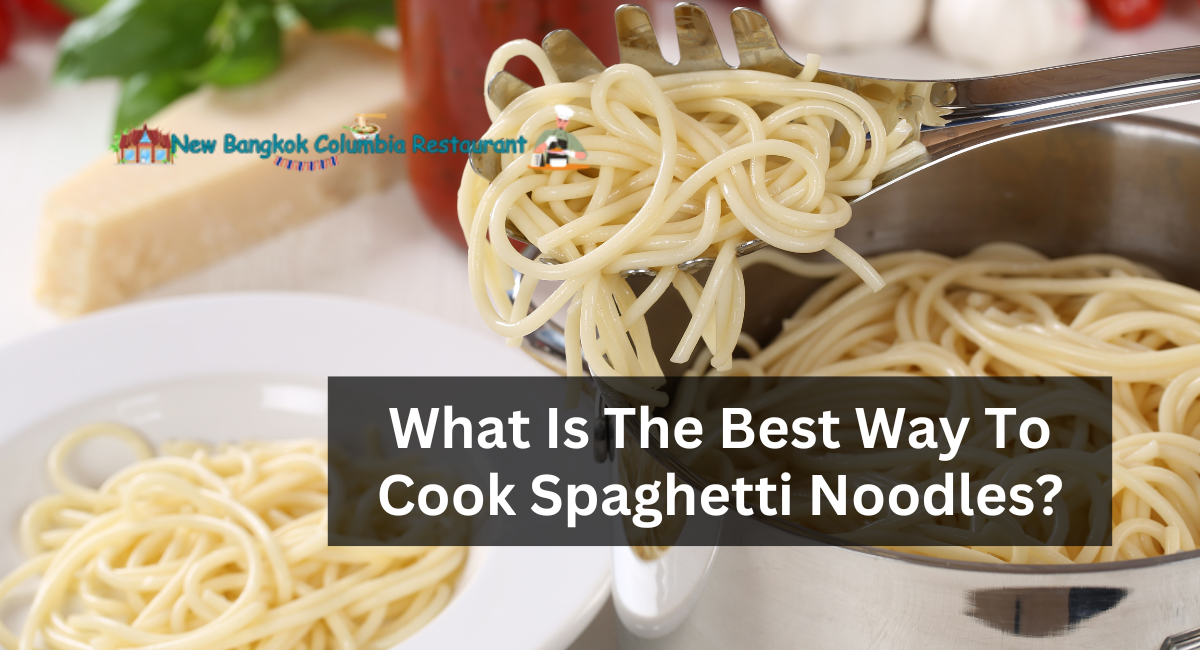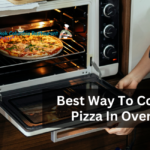Cooking spaghetti noodles is a culinary talent that crosses borders and offers comfort to millions of tables throughout the world.
Whether you’re a beginner or a seasoned cook, learning the art of creating properly al dente spaghetti is essential.
In this article, we’ll look at the finest ways to cook these popular pasta strands, from choosing the appropriate noodles and boiling water to the subtle stages that transform a simple dish into a gastronomic feast.
What Is The Best Way To Cook Spaghetti Noodles?
Cooking spaghetti noodles is a simple operation, and the optimal method relies on your own preferences. Here’s a basic recipe for great spaghetti noodles:
Ingredients:
- Noodles with spaghetti
- Salt (optional) Water
- Optional olive oil
Instructions:
Boil Water: Use a large pot with a lid to boil water for pasta. The more water you use, the less likely your noodles will stick together and the faster and more evenly they will cook. Covering the pot allows the water to heat up faster.
Add Salt (Optional): Season the pasta from the inside out by adding salt to the boiling water. It’s akin to seasoning vegetables during cooking.
For every gallon of water, add 1-2 teaspoons of salt. This is an optional step, although it can considerably improve the flavor of the pasta.
Bring to a Boil: Bring the water to a rolling boil. When you notice strong bubbling throughout the pot, it’s ready.
Add Spaghetti: Hold the spaghetti bundle or individual strands vertically, then slowly lower them into the boiling water.
To avoid sticking, stir immediately. Occasionally stirring while cooking aids in keeping the noodles separate.
Cook Al Dente: Cooking time varies depending on the thickness of the noodles and personal preference.
Start tasting the pasta a minute or two before the recommended cooking time on the package to attain the perfect “al dente” texture.
Al dente pasta is soft yet retains a small stiffness when bitten. It must not be mushy. Cooking times for fresh pasta may vary somewhat, so keep an eye on it.
Drain: Drain the pasta in a colander or strainer as soon as it reaches the required level of doneness to avoid overcooking.
Before draining the pasta, save a cup of the cooking water to use later to modify the consistency of your sauce.
Optional: Olive Oil: Drizzle a little olive oil over the drained pasta and gently toss it to prevent sticking, especially if you’re not using the pasta right away. It also adds a delicate flavor.
Serve: Plate the spaghetti noodles on warm plates or bowls to serve. Top with your preferred sauce, grated Parmesan cheese, fresh herbs, or other desired garnishes.
What To Serve With Spaghetti Noodles?
Spaghetti noodles, because of their versatility, serve as a blank canvas for a variety of accompaniments.
Begin with a powerful marinara or a creamy Alfredo sauce to complement this favorite pasta. Add meatballs, grilled chicken, or sautéed shrimp for a hearty variation.
To balance flavors, serve with garlic bread or a simple green salad. Color and nutrition are added by roasting vegetables such as asparagus or bell peppers.
Don’t forget the final touch of grated Parmesan or Pecorino Romano cheese. Whether you want a traditional Italian meal or a modern fusion, these combinations guarantee a pleasant and delectable spaghetti experience.
How To Keep Spaghetti Noodles Fresh
Follow these procedures to successfully store spaghetti noodles:
Cool And Drain: Cool and drain the noodles after cooking by washing them under cold water to stop the cooking process. Drain them completely to remove any excess moisture.
Portion And Bag: Divide the spaghetti into meal-sized portions and store in resealable plastic bags or airtight containers. Excess air is removed to keep moisture and odors from damaging the pasta.
Label And Date: To track freshness, label each bag or container with the contents and date of preparation.
Store: Keep the sealed bags or containers in a cool, dry pantry or cabinet. Spaghetti can be kept at room temperature for a long time.
Other Suggestions
If you’re using a smaller pot or like shorter strands, cut the spaghetti in half before adding it to the boiling water to ensure even cooking.
During the first minute or two of cooking, stir the pasta to prevent it from sticking. Instead of simple water, boil the pasta in homemade broth or stock for a more rich flavor.
Remember that the residual heat from the pasta will continue to cook it somewhat after draining, so take it out of the boiling water when it’s just slightly stiffer than the texture you want.
Cooking great spaghetti noodles is an art that anybody who like pasta can learn. You may make spaghetti recipes that are a true treat to the palette by using excellent ingredients, paying attention to cooking time, and testing for the appropriate texture.
Thanks for reading. I hope you find it helpful.










